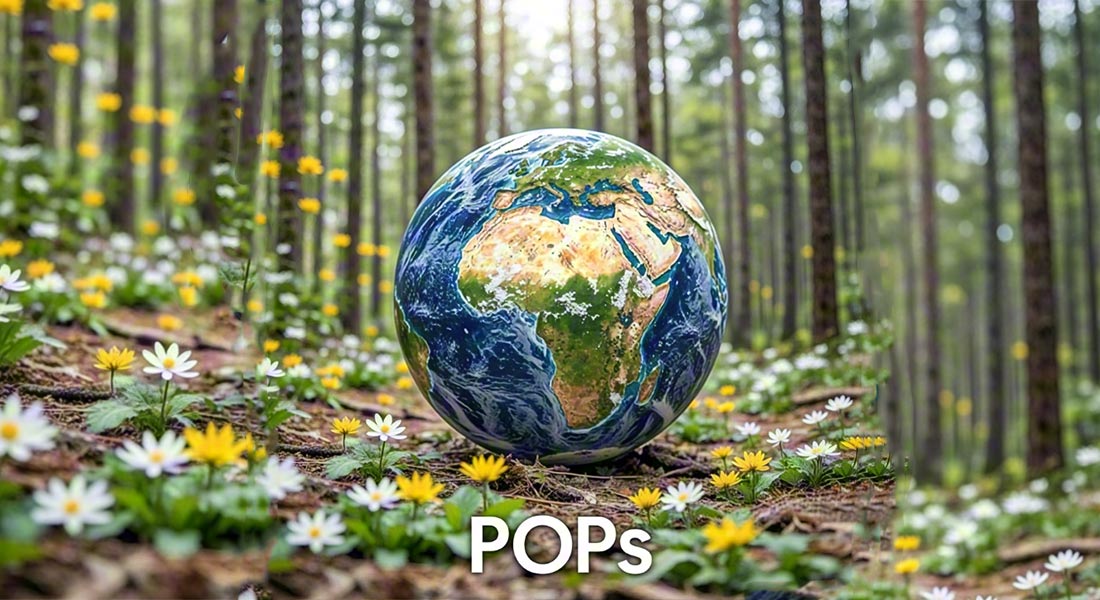A Brief Guide: Coping with Expanding POPs Regulations & Corporate Compliance
The Stockholm Convention is a crucial international treaty established to address the global environmental and health risks posed by Persistent Organganic Pollutants (POPs). Since its entry into force in 2004, its control list has expanded from the initial "Dirty Dozen" to over 30 substances. The European Union (EU) actively fulfills its obligations under the Convention through its POPs Regulation ((EU) 2019/1021), with a control list of 32 items that are often stricter than those in the Convention. The EU continues to strengthen restrictions on Per- and Polyfluoroalkyl Substances (PFAS) and brominated flame retardants. Major global economies have also established similar regulatory frameworks. For enterprises, compliance focuses on closely monitoring dynamic updates to the control lists, with particular attention to brominated flame retardants, PFAS, and other substances. It is also crucial to pay high attention to the extremely low limit requirements for "unintentional pollutants," ensuring product compliance through supply chain investigations and proactive testing to mitigate trade risks.

Part I: The Stockholm Convention
1. Formation of Global Consensus
In the latter half of the 20th century, the scientific community gradually recognized that a class of chemicals known as Persistent Organic Pollutants (POPs) posed a severe threat to the global environment and human health. POPs are characterized by their persistence, bioaccumulation, long-range transport capabilities, and high toxicity. They can spread globally and even accumulate in polar ecosystems and organisms where they have never been used. To address this global issue, the international community called for the establishment of a legally binding international convention.
2. Birth of the Stockholm Convention
Through joint efforts of the international community, the Stockholm Convention on Persistent Organic Pollutants was adopted in Stockholm, Sweden, on May 22, 2001, and officially entered into force on May 17, 2004. The core objective of the Convention is to protect human health and the environment from the hazards of POPs. Its initial list included 12 POPs of significant concern, known as the "Dirty Dozen." It is the third international convention with mandatory emission reduction requirements, following the Vienna Convention for the Protection of the Ozone Layer and the Framework Convention on Climate Change.
3. Current Status of the Stockholm Convention
Currently, nearly 200 countries and regions worldwide, including China, are signatories to the Convention. The initial 12 POPs listed in the Convention ("Dirty Dozen") were just the starting point. Subsequently, the Conference of the Parties regularly reviewed and added new POPs. For example, Perfluorohexane Sulfonic Acid (PFHxS) and others were added in 2022 and beyond. At the 2025 Conference of the Parties, new additions included chlorpyrifos, long-chain perfluorocarboxylic acids, their salts, and related compounds, and medium-chain chlorinated paraffins. As of 2025, the list includes over 30 substances and continues to be dynamically updated.
Part II: EU's POPs Regulation
The earliest EU POPs regulation was (EC) No 850/2004, adopted on April 29, 2004, and officially entered into force on May 20, 2004, aiming to ensure EU compliance with the Stockholm Convention obligations. To consolidate previous amendments and make the regulatory framework clearer, the EU issued (EU) 2019/1021, adopted on June 20, 2019, and entered into force on July 15, 2019. This regulation repealed and replaced the previous (EC) No 850/2004, becoming the current latest and most comprehensive basic EU POPs regulation.
As of 2024, Annex I of the EU POPs Regulation officially restricts a total of 32 substances. Below is a detailed list of these 32 substances, including their Chinese and English names, CAS numbers, and a summary of major restriction requirements:
| Serial Number | Chinese Name | English Name | CAS Number | Summary of Major Restriction Requirements |
| 1 | Aldrin | Aldrin | 309-00-2 | Prohibited from production and use. Strict limits as unintentional pollutants. |
| 2 | Chlordane | Chlordane | 57-74-9 | Prohibited from production and use. Strict limits as unintentional pollutants. |
| 3 | Chlordecone | Chlordecone | 143-50-0 | Prohibited from production and use. |
| 4 | DDT | DDT | 50-29-3 | Prohibited from production and use, with exemptions allowed for disease vector control in specific regions. |
| 5 | Dieldrin | Dieldrin | 60-57-1 | Prohibited from production and use. Strict limits as unintentional pollutants. |
| 6 | Endrin | Endrin | 72-20-8 | Prohibited from production and use. |
| 7 | Heptachlor | Heptachlor | 76-44-8 | Prohibited from production and use. Strict limits as unintentional pollutants. |
| 8 | Hexachlorobenzene | Hexachlorobenzene | 118-74-1 | Prohibited from production and use. Strict limits as unintentional pollutants. |
| 9 | Hexabromobiphenyl | Hexabromobiphenyl | 36355-01-8 | Prohibited from production and use. Strict limits as unintentional pollutants. |
| 10 | Hexabromocyclododecane (HBCDD) | Hexabromocyclododecane (HBCDD) | 25637-99-4, etc. | Prohibited from production and use. Specific exemptions and limits for recycled expanded polystyrene. |
| 11 | Hexachlorobutadiene | Hexachlorobutadiene | 87-68-3 | Prohibited from production and use. |
| 12 | Lindane | Lindane | 58-89-9 | Prohibited from production and use. |
| 13 | Mirex | Mirex | 2385-85-5 | Prohibited from production and use. |
| 14 | Pentachlorobenzene | Pentachlorobenzene | 608-93-5 | Prohibited from production and use. Strict limits as unintentional pollutants. |
| 15 | Polychlorinated Biphenyls (PCBs) | Polychlorinated Biphenyls (PCBs) | 1336-36-3, etc. | Prohibited from production and use. Extremely low limits in substances and articles (usually 10-50 mg/kg). |
| 16 | Polybrominated Biphenyls (PBBs) | Polybrominated Biphenyls (PBBs) | 59536-65-1 | Prohibited from production and use. Strict limits as unintentional pollutants. |
| 17 | Short-chain Chlorinated Paraffins (SCCPs) | Short-chain Chlorinated Paraffins (SCCPs) | 85535-84-8 | Prohibited from production and use. Content in substances, mixtures, and articles must not exceed 0.15%. |
| 18 | Toxaphene | Toxaphene | 8001-35-2 | Prohibited from production and use. |
| 19 | Perfluorooctanoic Acid (PFOA), its Salts, and PFOA-related Compounds | Perfluorooctanoic Acid (PFOA), its Salts, and PFOA-related Compounds | 335-67-1, etc. | Prohibited from production and use. Content in substances, mixtures, and articles must not exceed 0.025 mg/kg. Limit as unintentional pollutants is 1 mg/kg. |
| 20 | Perfluorooctane Sulfonic Acid (PFOS) and its Derivatives | Perfluorooctane Sulfonic Acid (PFOS) and its Derivatives | 1763-23-1, etc. | Prohibited from production and use. Strict limits and specific exemptions apply. |
| 21 | Pentabromodiphenyl Ether | Pentabromodiphenyl Ether | 32534-81-9 | Prohibited from production and use. Strict limits in substances and articles. |
| 22 | Octabromodiphenyl Ether | Octabromodiphenyl Ether | 32536-52-0 | Prohibited from production and use. Strict limits in substances and articles. |
| 23 | Decabromodiphenyl Ether (DecaBDE) | Decabromodiphenyl Ether (DecaBDE) | 1163-19-5 | Prohibited from production and use. Limit for unintentional pollutants in recycled materials significantly tightened to 10 mg/kg. |
| 24 | Dicofol | Dicofol | 115-32-2 | Prohibited from production and use. |
| 25 | Perfluorohexane-1-sulphonic Acid (PFHxS), its Salts, and PFHxS-related Compounds | Perfluorohexane-1-sulphonic Acid (PFHxS), its Salts, and PFHxS-related Compounds | 355-46-4, etc. | Prohibited from production and use. Strict limits apply. |
| 26 | Methoxychlor | Methoxychlor | 72-43-5 | Prohibited from production and use. |
| 27 | Trichlorobenzene (Technical) | Trichlorobenzene (Technical) | - | Prohibited from production and use, restricted as substances and intermediates. |
| 28 | Hexabromodiphenyl | Hexabromodiphenyl | - | Prohibited from production and use. |
| 29 | Polychlorinated Dibenzo-p-dioxins and Dibenzofurans (PCDD/PCDF) | Polychlorinated Dibenzo-p-dioxins and Dibenzofurans (PCDD/PCDF) | - | Prohibited from production and use, with strict restrictions on emissions during waste disposal. Strict toxicity equivalent limits in substances, mixtures, and articles. |
| 30 | Pentachlorophenol, its Salts, and Esters | Pentachlorophenol, its Salts, and Esters | 87-86-5 | Prohibited from production and use. Strict limits in substances and articles. |
| 31 | Ultraviolet Absorber UV-328 | 2-(2H-benzotriazol-2-yl)-4,6-ditertpentylphenol (UV-328) | 25973-55-1 | Prohibited from production and use. |
| 32 | Dechlorane Plus® | Dechlorane Plus® | - | Prohibited from production and use. |
The EU continues to strengthen controls on PFAS and brominated flame retardants. Enterprises need to closely monitor updates from the Official Journal of the European Union and the European Chemical Agency (ECHA) website.
Part III: National POPs Regulations
1. China's Pollutant Control Requirements (China POPs)
1.1 Core Regulations: Implementation Plan for the Stockholm Convention on Persistent Organic Pollutants, Catalog of Toxic Chemicals Strictly Restricted in China, Catalog of Industrial Structure Adjustment Guidance, etc.
1.2 Control Methods: Prohibition/restriction on production, use, import, and export; promotion of Best Available Techniques/Best Environmental Practices to reduce unintentional production.
1.3 Key Controlled Substances: China strictly fulfills its obligations under the Convention, incorporating newly added substances into domestic control through announcements. Key substances include DDT, hexachlorobenzene, chlordane, mirex, hexabromocyclododecane, and perfluorooctanoic acid.
1.4 Requirements:
• Prohibit the production, use, and import/export of eliminated POPs substances.
• Implement strict restrictions and registration for specific uses of POPs (e.g., PFOS for fire-fighting foam).
• Establish strict standards for POPs content in waste and regulate their disposal methods.
2. Japan's Chemical Substance Review Law Category I Substances (Japan POPs)
2.1 Core Regulation: Chemical Substances Review and Production Control Law (Chemical Review Law).
2.2 Controlled Substances: Substances with persistence, high bioaccumulation, and long-term toxicity are designated as "Category I Specific Chemical Substances."
2.3 Requirements:
• Prohibit their production, import, and use in principle.
• Exemptions are allowed only for specific purposes, such as closed-system intermediates and scientific research.
• Controlled substances include PCBs, DDT, hexabromocyclododecane, perfluorooctanoic acid, and decabromodiphenyl ether.
3. Australia's IChEMS Register (Australia POPs)
3.1 Core Mechanism: Industrial Chemicals Environmental Management Standards (IChEMS) Register.
3.2 Control Methods: Chemical substances are listed in different Schedules for graded management.
3.3 Requirements:
• Schedule 7: Represents the highest risk, prohibiting import, manufacture, and use. Substances listed in this directory include PFOA, PFOS, HBCDD, and decabromodiphenyl ether.
• Enterprises must comply with relevant laws formulated by their respective states or territories based on the IChEMS Register.
4. Canada's Prohibition of Certain Toxic Substances Act (Canada POPs)
4.1 Core Regulation: Prohibition of Certain Toxic Substances Regulations (SOR/2012-285) and its 2022 Amendment Draft.
4.2 Control Methods: Managed through a "Prohibited Substances List."
4.3 Requirements:
• Current Regulations: Prohibit the manufacture, use, sale, and import of substances and their products listed on the list, including PFOS, PFOA, HBCDD, and SCCPs.
• 2022 Amendment Draft Highlights:
• Expand the scope of control from specific PFAS substances (e.g., PFOA) to the entire category of long-chain perfluorocarboxylic acids (LC-PFCAs).
• Add a ban on DecaBDE (decabromodiphenyl ether).
• Cancel exemptions for some substances, making the regulations more stringent.
5. Singapore's 1999 Environmental Protection and Management Act-Related High-Risk Substances
5.1 Core Regulation: Environmental Protection and Management Act and its subsidiary regulations.
5.2 Control Methods: Implement a permit and control system for "high-risk substances."
5.3 Requirements:
• Any person importing, manufacturing, or selling controlled "high-risk substances" in Singapore must obtain a permit.
• Controlled substances include various POPs, such as PCBs, DDT, hexachlorobenzene, PFOS, and PFOA.
• Strict regulations also apply to the disposal of waste containing these substances.
6. US TSCA & TPCH Regulations
(1) Toxic Substances Control Act (TSCA)
Competent Authority: US Environmental Protection Agency (EPA).
Requirements:
• EPA has the authority to test and regulate existing and new chemical substances.
• Strict restrictions have been imposed on various POPs substances, such as:
PFOA and PFOS: Listed in the "Significant New Use Rule" (SNUR) and efforts are underway to list them as "hazardous substances."
Decabromodiphenyl Ether (DecaBDE) and Pentabromodiphenyl Ether (PentaBDE): Prohibited from production, import, and sale.
Hexabromocyclododecane (HBCDD): Subject to production and use restrictions.
(2) Packaging Material Toxic Substances Act (TPCH)
Nature: A state-level regulatory model adopted by multiple US states.
Requirements:
• Restrict the intentional addition of four heavy metals (lead, cadmium, mercury, hexavalent chromium), phthalates, and PFAS in packaging and packaging components.
• The ban on PFAS is a significant recent update, requiring that the content of PFAS in any packaging or component must not exceed 100 ppm.
Part IV: Key Points and Compliance Recommendations
1. Key Substance Groups to Focus On:
• Brominated Flame Retardants: Decabromodiphenyl ether, hexabromocyclododecane, polybrominated biphenyls, pentabromo/octabromodiphenyl ethers, etc.
• Per- and Polyfluoroalkyl Substances: PFOA, PFOS, PFHxS, etc. This is currently the fastest-expanding area of global regulation.
• Traditional Organochlorine Pesticides: Such as DDT, chlordane, and mirex, but they may exist as pollutants in certain recycled materials.
2. "Unintentional Pollutants" as a Key Compliance Challenge: Many bans do not require "absolute zero content" but allow the presence of "unintentional pollutants" in recycled materials or chemical by-products, albeit at extremely low limits (e.g., 10 mg/kg for decabromodiphenyl ether, 0.025 mg/kg for PFOA). Enterprises must strictly screen recycled materials in their supply chains.
3. Action Steps:
• Identify Risk Materials: Focus on plastics (especially recycled plastics), rubber, textiles, coatings, inks, etc.
• Supply Chain Investigation: Request declarations and test reports compliant with EU POPs regulations from upstream suppliers.
• Proactive Testing: Conduct targeted testing on high-risk products and components to ensure compliance with the strictest limit requirements.
• Continuous Monitoring of Updates: Track regulatory dynamics through professional institutions or official channels, as the list is expected to continue expanding (e.g., potential additions of more PFAS substances).
More information: Eco-friendly Inks: Unlocking the REACH 242 SVHC List for a Green Future

